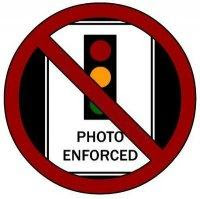In a significant move reflecting public sentiment toward traffic enforcement technology, Anaheim voters have decisively voted to ban red light cameras in their city. This decision has sparked discussions about traffic safety, law enforcement practices, and the effectiveness of automated ticketing systems. In this article, we’ll explore the implications of this ban and what it means for residents and visitors in Anaheim.
Understanding the Decision
On [insert specific date, if known], Anaheim residents participated in a referendum that led to the prohibition of red light cameras at intersections throughout the city. This decision was driven by a growing sentiment among voters that red light cameras may not effectively enhance traffic safety, and concerns over the perceived fairness of automated enforcement.
Key Factors Influencing the Ban
-
Public Sentiment: Many residents expressed frustration over red light camera tickets, citing a belief that these systems primarily generate revenue for the city rather than enhance safety. This sentiment resonated with voters, prompting a push for change.
-
Effectiveness of Red Light Cameras: Proponents of the ban argued that studies have produced mixed results regarding the effectiveness of red light cameras in reducing accidents. Critics of the cameras pointed to evidence suggesting that they can lead to rear-end collisions as drivers slam on their brakes to avoid a ticket.
-
Financial Implications: The revenue generated from red light camera fines often contributes to city budgets. However, many voters felt that the financial burden on drivers outweighed any potential safety benefits.
What the Ban Means for Anaheim Residents
Changes to Traffic Enforcement
With the ban on red light cameras, traffic enforcement in Anaheim will return to traditional methods. This means that police officers will be responsible for monitoring traffic violations at intersections, rather than relying on automated systems. Residents can expect increased police presence in some areas to ensure compliance with traffic laws.
Impacts on Traffic Safety
The decision to ban red light cameras raises questions about the future of traffic safety in Anaheim. While some residents welcome the change, others worry about the potential for increased violations at intersections previously monitored by cameras.
Community Engagement
The ban on red light cameras highlights the importance of community engagement in local governance. Residents who feel strongly about traffic safety and enforcement are encouraged to participate in discussions and advocate for measures that align with their views. This can include community meetings, public forums, and outreach to city officials.
Alternatives to Red Light Cameras
As Anaheim transitions away from red light cameras, discussions about alternative measures to enhance traffic safety are likely to take center stage. Potential alternatives include:
-
Increased Police Presence: More frequent traffic patrols can help deter violations and improve compliance with traffic laws.
-
Public Awareness Campaigns: Educating drivers about safe driving practices and the consequences of traffic violations can promote a culture of safety on the roads.
-
Improved Traffic Signal Design: Enhancing traffic signals and signage at intersections can help reduce confusion and improve safety for all road users.
-
Community Traffic Safety Initiatives: Encouraging local organizations to develop traffic safety programs can engage the community and foster safer driving behaviors.
Conclusion
The decision by Anaheim voters to ban red light cameras marks a significant shift in the city’s approach to traffic enforcement. As the community navigates this change, it will be essential to prioritize safety and explore alternative measures to ensure that Anaheim remains a safe place for drivers, pedestrians, and cyclists alike. Engaging in open dialogue and collaboration among residents, local authorities, and traffic safety advocates will play a crucial role in shaping the future of traffic management in Anaheim.

